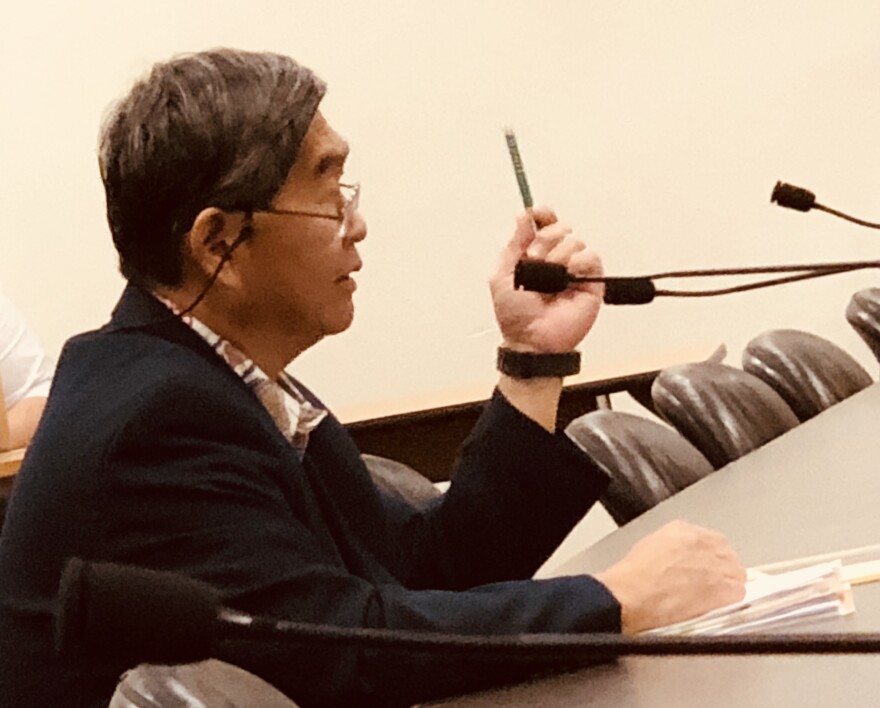The Board of Water Supply is continuing its push for legislation to upgrade the Navy’s Red Hill Fuel Storage tanks. HPR’s Wayne Yoshioka reports.
An administrative order and consent was signed following the release of 27-thousand gallons of jet fuel from Red Hill tank number 5 in 2014. Board of Water Supply manager and chief engineer, Ernie Lau, says the Navy’s storage tanks are ticking time bombs and the 20 years allowed by the order to construct containment measures should be stepped up.

“Just remember there is 187.5 million gallons of fuel right now. Fifteen of those tanks are full of fuel. These tanks sit only a hundred feet above the drinking water aquifer. And the thickness of that steel plate is the thickness of this pen. It’s a quarter-inch thick that is corroding and rust never sleeps.”
But, Naval Facilities Hawai’i commander, Captain Richard Hayes, says the Navy has until the end of this year to recommend a containment alternative and Lau’s characterizations of rusting fuel tanks are not accurate.
“The leak was only caused by faulty contractor workmanship not due to any corroding. And while it’s true that the steel lining of the tanks is a quarter inch, there’s between from me and you about four feet of table. It’s very similar to the four feet of concrete that is behind that quarter inch steel.”
Lau told lawmakers that containment measures for the fuel tanks should be completed in half the time allowed by the order.
“The facility was built in the Second World War in 3 years. I think 10 years is achievable because also technology and engineering has really progressed in the last 75 years.”
But, Navy Captain Hayes says wrapping the massive tanks simultaneously using the limited size of the tunnels would be an impossible task.
“Just throwing 20 contractors in there and say each contractor have a tank and go, there’s just not enough room within the facility for them to get all that material. It just would not be logistically feasible.”

House Energy and Environmental Protection Committee chair, Chris Lee, advanced Bill 2712 to continue the discussion.
“We have an obligation to all our communities and the people in them to ensure safe drinking water, first and foremost. So how can we work together to figure out what the plan is.”
For HPR News, I’m Wayne Yoshioka.




